ASO is an acronym for "Anvil Shaped Object".
An ASO is a junk anvil made of weak brittle
cast iron or un heat treated material.
An ASO may be useful for the ocassional straightening job but not for regular forging.
New ASO's often cost as much an old beat up but useful real anvil.
Would be blacksmiths are much better off purchasing a worn out old anvil than a nice shiney new ASO.

ABOVE: A genuine Grizzly anvil photographed at SOFA in 2005.
When I photographed it I immediately thought this should be labeled the worlds ugliest anvil.
Grizzly tools sell these anvils with a lot of hype but they are honest and clearly state that these are made of cast iron.
Their price is fair for such a heavy door stop.
My distain for ASO's is not so much that they are not suitable for blacksmithing but that the vast majority are sold with lies and deception.
While Grizzly Tools is honest about their product I have yet to find another source that at the least does not call their ASO's "Professional Quality".
Many claim their anvils are steel when they are in fact cast iron.
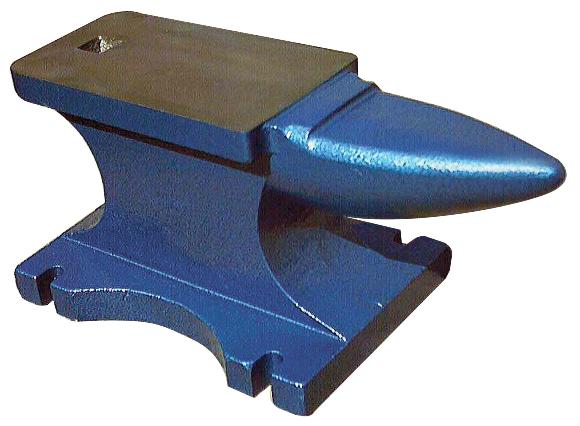
ABOVE: A photo of an anvil sold in China, by tool dealers world wide and on ebay.
Our source bought two of these anvils in China because they were VERY inexpensive there and says (from experience using them) they are junk cast iron anvils.
The problem is that many dealers are are now selling these as "steel" anvils, not the much cheaper, useless for an anvil, cast iron.
Besides lying about the materials they are made of they have ripped off Grizzly's pattern OR are Grizzly's source selling them "out the back door".
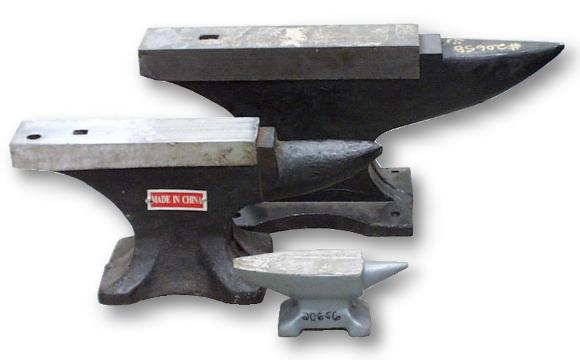
ABOVE: Three cast iron anvils photographed at a Carolina Farm Supply store.
We also did a formal rebound test on these using the same steel ball and ruler that I have tested dozens of anvils with.
They all had less rebound than the concrete floor they were setting on.
While these LOOK more like "typical" anvils than the Grizzly they are of no better quality.
They include a prominent feature found on many cast iron anvils and that is the face ledge.
This is to make the uneducated buyer THINK it has a tool steel top plate.
In fact the plate on real anvils is difficult to discern where the plate joins the body.
The small anvil above is commonly sold as a jeweler's anvil. It too is cheap cast iron.
I was given this one as a joke gift.
Since then the thick layer of putty making the body look smooth has flaked off in big chunks (without use).
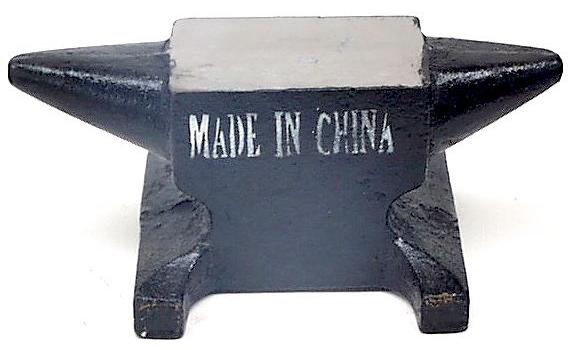
ABOVE: This is yet another cheap cast iron anvil from China.
It was sold as having two pritchel holes and being of "professional quality".
The ebay dealer "intergratool" sold them for 99 cents with $20 non-refundable shipping.
Everything from the description to the deal was a flim-flam.
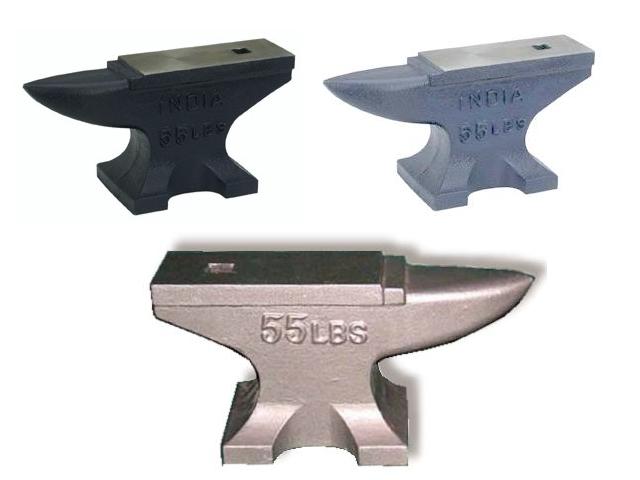
The origin of the anvil at top left was hidden by digitally darkening the image so that INDIA could not be read on it.
The image at top right is the same image lightened.
The gold anvil in the foreground is from a copy of the same pattern.
Versions of these for international distribution are marked 55 LBS / 25 KG.
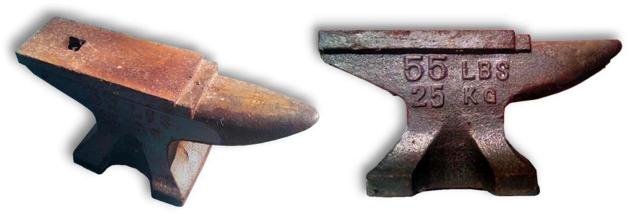
Above, yet another version of the India pattern. The owner claimed they had this anvil for 30 years.
It has obviously seen little or almost no use.
This is typical of many farm and hobby anvils that do not get used for actual forging or any great degree of work.
There is no shortage of cheap cast iron anvils in various styles.
With a very few exceptions they are sold using flattering unqualifiable terms and outright lies about their material.
Occassionaly they are sold for more than a good quality used anvil.

USED CAST IRON ANVIL!
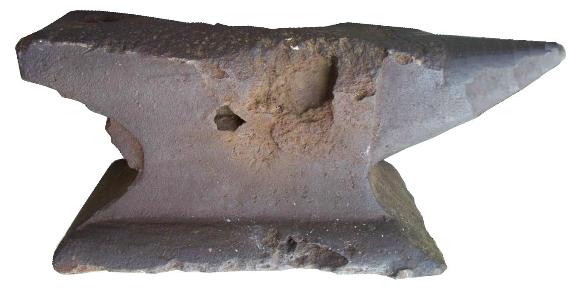
ABOVE: The early 20th Century cast iron anvil that the Grizzly pattern is derived from.
The condition of this anvil is what you get with very little use doing actual forging on a cast iron anvil.
The large hole in one side is the result of a sand inclusion which is common in low quality castings.
Imagine how that thin ledge on the Grizzly and its look alikes is going to (not) hold up.
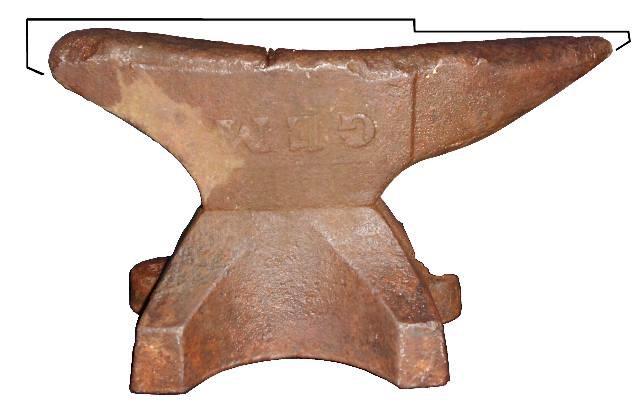
Rare early 20th Century American made cast iron anvil.
That is not sway from the anvil giving but broken off material.
Even part of the bolting lug on the right is broken off.
Note the upside down GEM logo.
Again, what makes this piece rare is the fact that these cheap cast iron "anvils" wear and break down rapidly under use.
Few survive in this condition because they were scrapped.
Many more "old" modern ASO's are found in good shape but that is because so many have been sold to people that never use them.
References and Links












städ, incus, aambeeld, batente